1) What goes wrong outdoors (quick symptoms → likely causes)
Dim/black screen, flicker → backlight PSU/LEDs aged or damp; supply fluctuation; thermal shock damage.
Condensation/fog under cover → low enclosure rating; cracked/aged sealant; water ingress.
Mottled image / color shift → LCD chemistry aged by heat/UV; driver IC faults.
Touch failure → oil/film on surface; ITO micro-cracks; moisture/dust shielding the capacitive field.
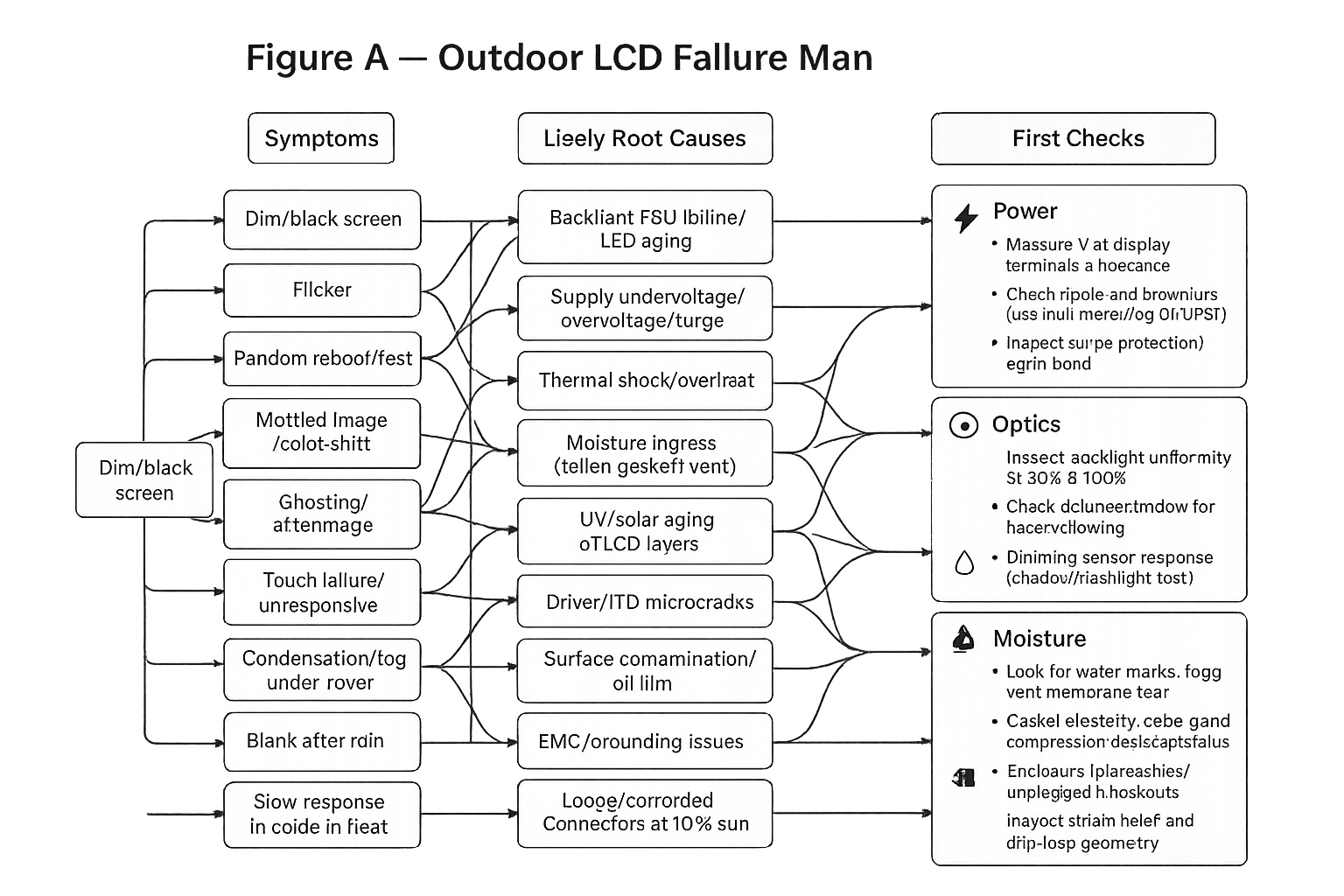
2) Design/selection measures (prevent problems up front)
Ingress & UV: Choose IP65+ outdoor-rated HMI displays with UV-resistant window and gasketing.
Wide temperature: Specify –30 °C to +70 °C (or better) display/driver components.
Sunlight readability: ≥ 800 cd/m² brightness with auto-dimming (ambient light sensor).
Display tech: For very cold starts, consider low-temperature LCD formulations or OLED with derating plan.
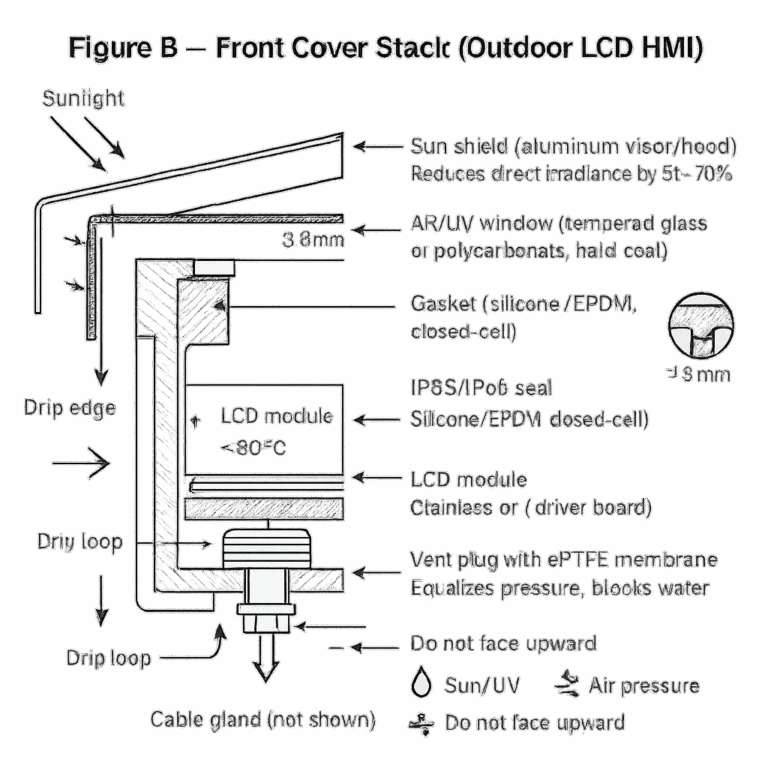
3) Installation best practices
Shading & orientation: Add sun-hood; avoid direct, normal incidence sunlight on the screen.
Enclosure: Use a vented rain-splash design with drip-edge and insect mesh; keep air path but block jets.
Sealing: Grommets and silicone O-rings on cable entries; pot unused knockouts; torque to spec.
Cable management: Drip loops on all cables; avoid upward-facing connectors.
Site placement: Face away from prevailing rain; elevate from standing water.
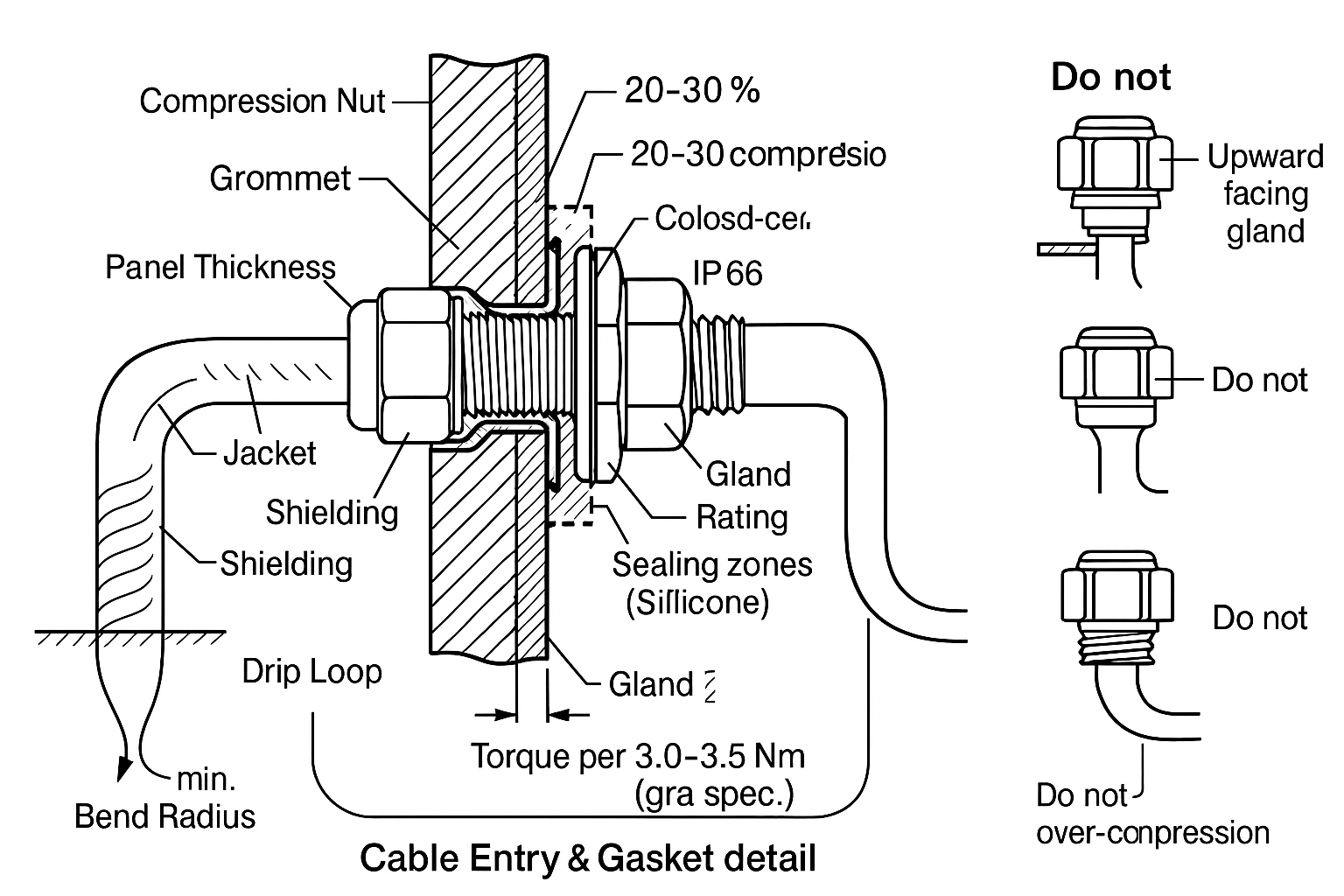
4) Routine inspection & care
4.1 Frequencies
Normal seasons: Monthly external inspection.
Rainy/high-humidity seasons: Weekly quick checks.
4.2 Cleaning
Method: Anti-static screen cleaner + lint-free wipes; light pressure only.
Do not use: Alcohol/solvent or abrasive cleaners (cause haze and coating damage).
4.3 Moisture control
Replace/refresh desiccant packs; inspect and replace seals/gaskets if hardened or cracked.
4.4 Power quality
Verify supply is within tolerance; add surge suppression/UPS or AVR where brownouts/spikes occur.
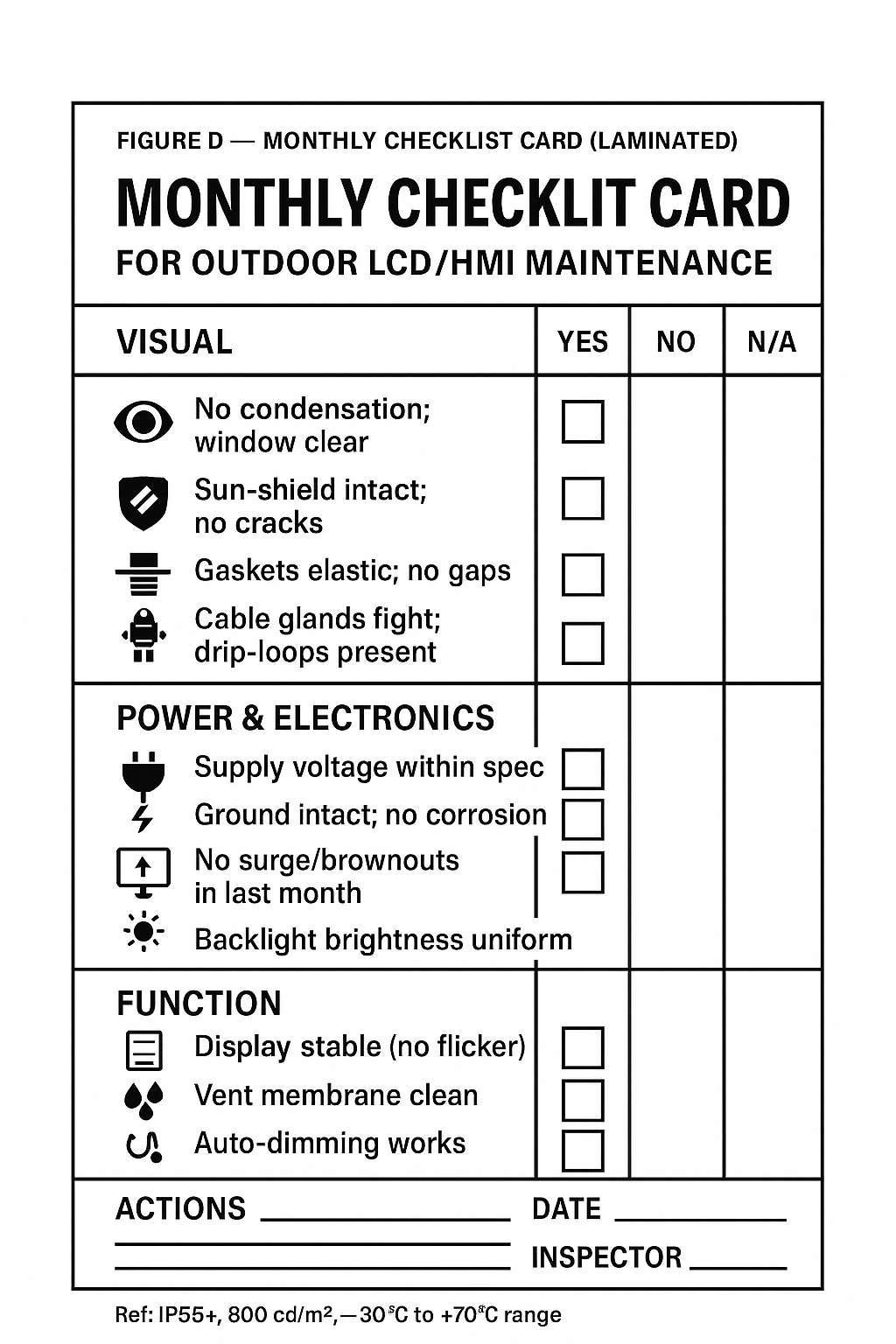
5) Seasonal operation tips
High heat: Improve ventilation or add a low-noise exhaust fan; avoid sustained 100% brightness in direct sun.
Low temperature: Pre-warm: power idle a few minutes before full load; specify low-temp LCD for sub-zero sites.
6) Field troubleshooting (safe, fast, traceable)
Make safe & power down.
Visuals: Look for water marks, haze, cracked window, UV-yellowed gasket.
Connectors: Reseat power/signal; check for corrosion or loose screws.
Substitution test: If possible, swap in spare screen or driver board to isolate cause.
Record & report: Log symptom, time, weather, and actions for reliability tracking.

7) One-page maintenance checklist (printable)
A. Visual (front & enclosure)
□ No condensation/fog; window clear
□ Sun-hood intact; no cracks
□ Gaskets elastic; no gaps
□ Cable glands tight; drip-loops present
B. Power & electronics
□ Supply voltage within spec at terminals
□ Ground/bond intact; no corrosion
□ No surge/brownout events in last month (review log/UPS)
□ Backlight brightness uniform across screen
C. Function
□ Display stable (no flicker/ghosting)
□ Touch/keys respond across full area
□ Auto-dimming works under shadow/light change
□ On-screen colors neutral (no tinting/banding)
D. Moisture control
□ Desiccant replaced/dated
□ Vent membrane clean; enclosure pressure equalizes on door close
E. Actions taken
Notes / parts replaced / next review date
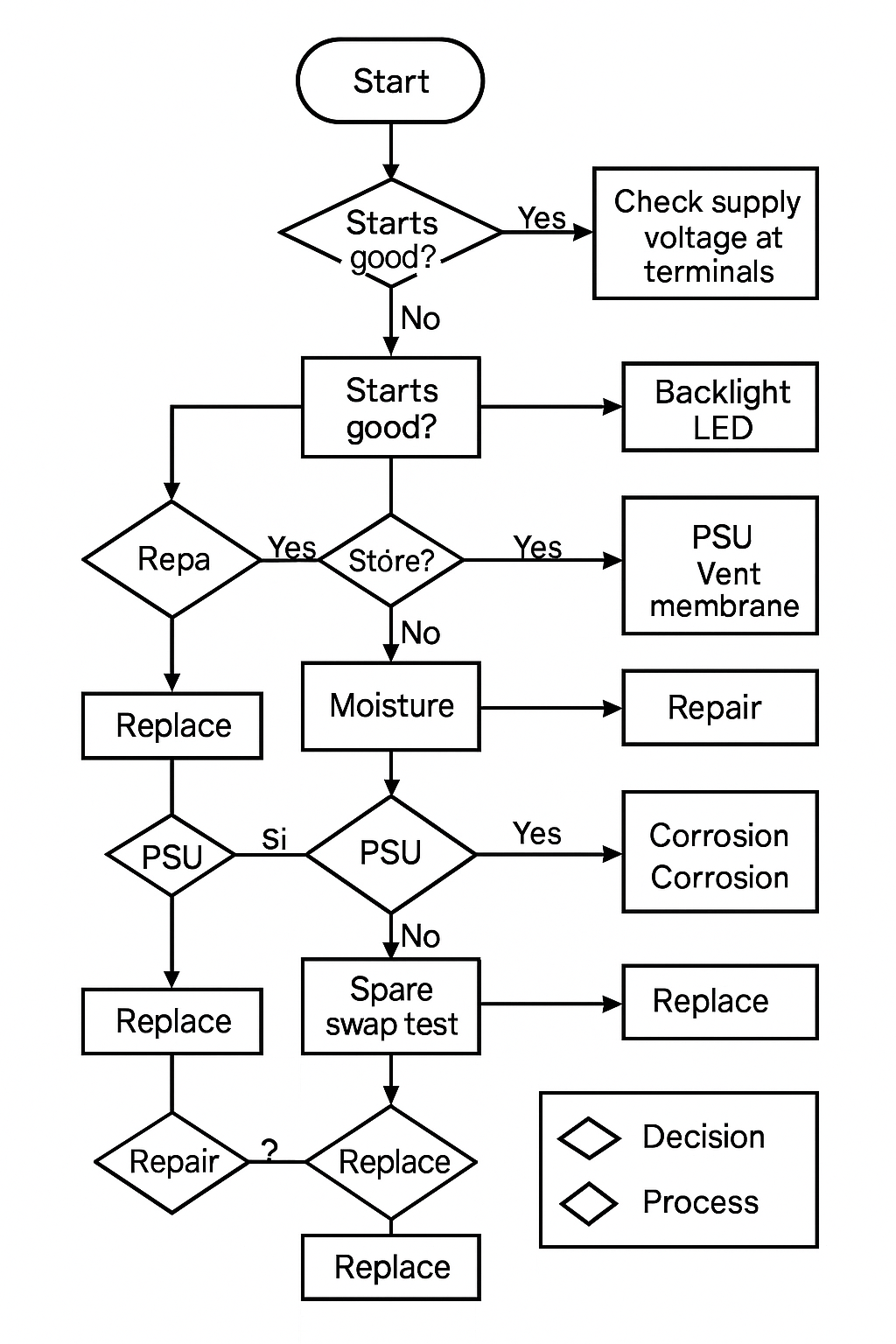
8) SOP — Cleaning & resealing (5–10 min)
Isolate power; hang LOTO tag.
Wipe display with approved cleaner; dry with lint-free wipe.
Inspect bezel and gasket; if tacky/cracked → replace.
Check gland compression; re-torque to rating; apply silicone where specified.
Replace desiccant; date the pack.
Power up; verify brightness and touch; log results.
